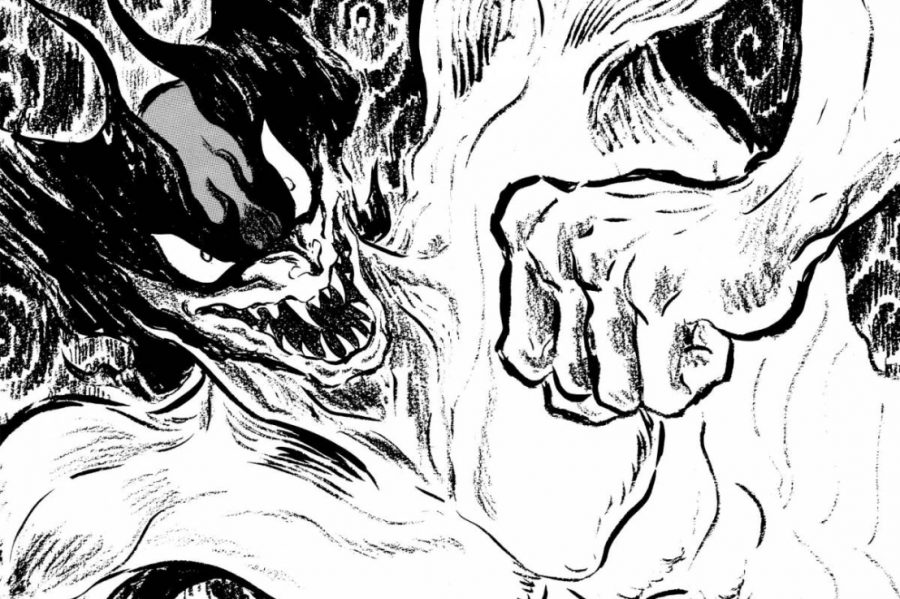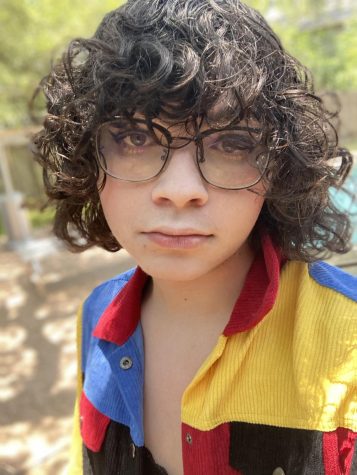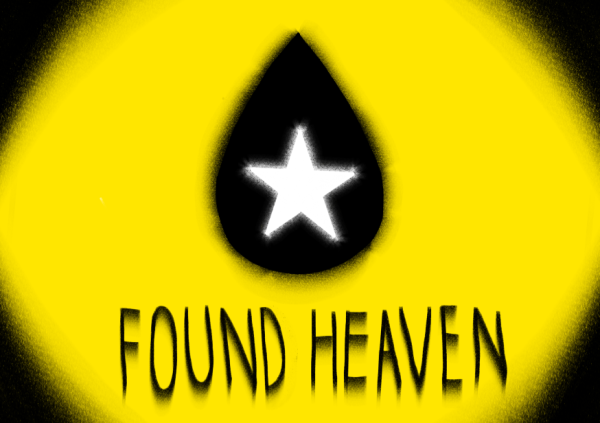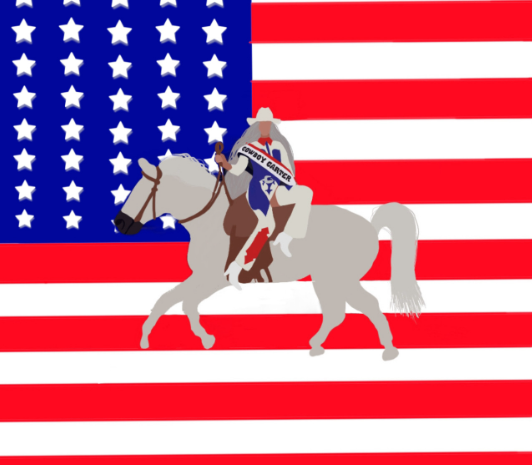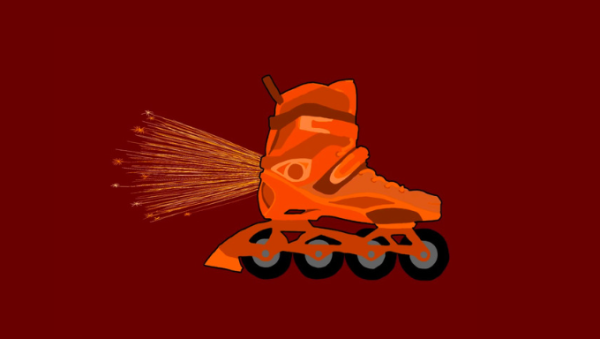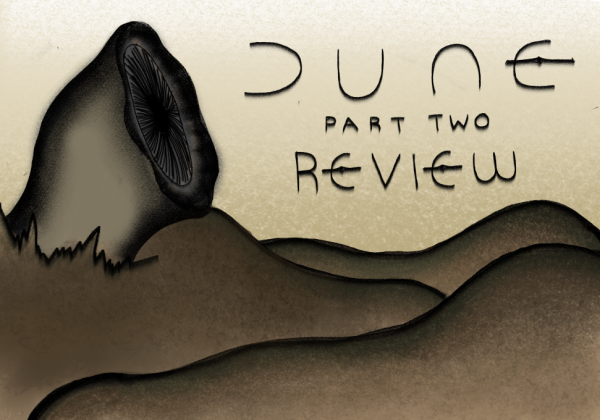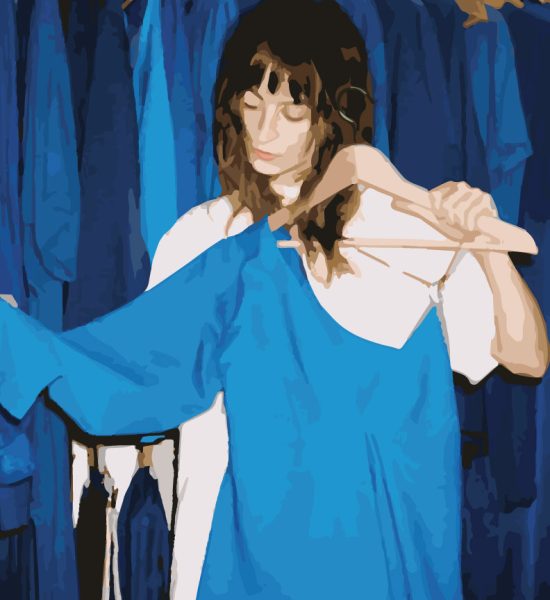The Long-lasting Impact of ‘Devilman’: Why it’s Significant 50 Years Later
Introduction:
Nearly 50 years ago, on June 11th, 1972, illustrator and writer Go Nagai, known for his works on Cutie Honey, Mazinger Z, creating and shaping the super robot genre, and pioneering the magical girl genre, created a manga series for the Weekly Shōnen Magazine, a Japanese manga anthology. The series would tackle themes of ideological warfare, love, and the human condition, all with a distinct grotesque art style. This series, known as Devilman, would influence generations of creators to come, inspiring manga and anime series such as Berserk or Neon Genesis Evangelion, and even popular video game series such as Shin Megami Tensei. To this day, Devilman is still relevant in our current world, and maybe even more so now than it was in 1972.
The Premise:
The series follows two boys, Akira Fudo and Ryo Asuka, who form a pact to find and kill demons, which are hiding in the bodies of normal people, meaning that anyone you know and love could be a demon in disguise. Akira and Ryo attempt to become demons at the Sabbath, but when things go awry, Ryo is injured, and Akira, possessing a kind heart, merges with the Demon Lord Amon and becomes Devilman. Now, Akira and Ryo will have to maintain their pact, leaving Ryo to uncover these demons, and Akira to destroy them as Devilman. Fortunately for us, the readers, the story won’t stay as simple, and unfortunately for Akira and Ryo, things don’t go as well as they thought.
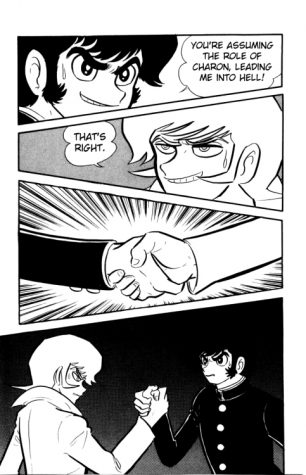
Series Overview:
Devilman may start as a simple superhero plot, but by the end of the series, you’ll be longing for the days where Akira and Ryo worked together to fight demons. The story begins with Akira, a somewhat-cowardly but kind young man reuniting with his old friend, Ryo. Ryo explains how demons exist and the boys form a pact to uncover and kill these demons. While the first two chapters begin with Akira fighting demons that attack his loved ones, the third chapter starts mentioning how demons are possibly there to quell the ever-growing human population, how wars used to be fought to do the very same thing, and how humans possibly go to war naturally.
Spoilers for a 50-year old manga, but the series ends with Ryo telling the world to end the lives of any and all possible demons or Devilmen (those who merge with a demon that possess a human heart) they see, even exposing Akira as a Devilman, and Miki who opposes him by protecting her old friend Akira, leading to a heartbreaking ending where Miki and her family are murdered, and a galactic-scale fight between Devilman and Ryo, who was secretly Satan the whole time. It seems even Satan didn’t think that they (as Ryo) would fall in love with Akira, causing their plan of getting rid of the entire concept of love to completely fail. This leads to a dense ending for our antagonist, who is punished by experiencing an ever-looping reality in which he mourns the loss of their lover and experiences the feeling of sorrow while living alone in a world of complete ruin, all before God resets the entire world, all so Satan can experience his sorrow for Akira over, and over, and over again.
Review:
Right off the bat, I think this story is incredible. The themes are still relevant, the three main characters are likeable, and the climax is so bleak and sad, yet sensational at the same time. I like how Akira starts out as an everyman, but later becomes a virtuous hero whose kindness rubs off on Miki and surprisingly, Ryo. Miki, from as early as chapter one, is one of the most likeable characters in the series, making her death all the more heartbreaking. Ryo is one of the most complex characters I’ve seen in fiction, and because of that, he’s one of my favorites. He’s the complete opposite of Akira, and despite the twist of him being Satan coming out of nowhere, I still think the rest of the twist is handled well.
Satan’s plan was to create a world where demons could live, and where love does not exist, as he believes without love, there is no sorrow, but what he didn’t expect was to fall in love with Akira, making him the biggest loser by the end of the series. I like the three main characters a lot, but many of the others feel underdeveloped, and even Miki feels a little less developed when compared to Akira and Ryo because of how little she appears later on in the story. Thankfully, you’ll be seeing Akira, Ryo, and Miki more often than anyone else. I think Nagai’s art style is very interesting. It has that distinct, cute ‘70s style to it in most of his series, and while it can be seen in some of the more innocent moments in Devilman, what I find interesting is that most of this series looks really adult-oriented. Devilman has a lot of full-page art that really makes you appreciate the designs of the demons and the fights at hand. The demon designs are completely otherworldly, and lead to some creative fights.
The final chapter is basically just artwork conveying a battle between Satan and their demons, and Akira and his army of Devilmen, which I think is appropriate for a battle of that emotional scale. There is a lot of violence in this series, but it never seems too overboard — just make sure no one’s around when you read it. I think the series has a lot of fun visual metaphors that convey the feelings of the characters, or just how they work in general, with one of my favorites being Satan’s character design. There are currently two volumes of the manga that cover the whole series, three Original Video Animation (OVA) adaptations, and a 2018 adaptation. However, the rest of the series is much larger than that, featuring a crossover between Devilman and Mazinger Z, and a children’s TV show that had a good ending, of which is vastly inferior to that of the manga. The manga, OVAs, and 2018 adaptation Devilman Crybaby are the most accessible forms of the story, and are the most accurate.
Commentary and Analysis:
Devilman, despite its age, is still relevant to our current world, probably even more so than it was in 1972. Devilman predominantly features themes of war that are personified by demons and humans themselves in the story, depleting the ever-growing human population. It questions if demons are there to cut down the population, or if humans go to war naturally to do the very same thing. In a way, the story makes Earth seem like the real Hell, and humans as no better, if not worse, than the demons they are fighting. In our current world of enduring difficult times in a pandemic and questioning the leader of our nation and our nation itself, I’m sure the original story’s themes of “quelling the human population naturally” and “humans being the real demons” stick out because of how relevant they are. If you don’t believe me, Donald Trump is literally in the background in a scene in Devilman Crybaby.
Akira stands out as being a super relatable character, who by the end of the story, rubs off on both Miki and Ryo in very different ways. His simple but effective superhero backstory of being a demon who possesses a kind heart is more than it seems. Akira starts out as a sensitive student, who after merging with a demon, becomes a lot more aggressive, but retains his kindness, which leads to his best friend Miki advocating for the lives of demons, ultimately leading to her tragic death. Despite Akira’s death at the end of the series, his kindness still lives on, foiling Ryo or rather, Satan’s grand plan by making him experience the foreign feeling of love, and subsequently sorrow for all of eternity. Giving Akira this superhero-type backstory was a genius idea in which Nagai could write an engaging, horrific, and darker take on the common superhero premise, and turn Devilman into a classic superhero for children in Japan, who would eventually grow up and read the original story.
Ryo is one of the best “villains” to ever grace any page of fiction. Him going from an old friend of Akira wanting to reveal the secrets of demons, to a sidekick-esque genius and loyal friend who would uncover demons for Devilman to destroy, to the absolutely heartless, biblical force in control of his new world of demons is his arc. Satan’s plan was to brainwash himself to think he was Ryo Asuka, but they never expected to meet Akira Fudo, who would throw off their plan completely. The story relies on your expectation that “no matter how bad things get, Akira and Ryo will still be working together,” but that is completely thrown for a loop when Ryo realizes who he really is.
Realizing his true identity as Satan, Ryo sends the world into a demon-hunting frenzy, all so he could turn the humans against each other. The final battle between him and Akira is devastating. Despite how short it may seem on paper, it’s actually a 20-year long battle between Devilman and Satan. Satan wanted to fight Akira for all of eternity in his new world of demons, but they weren’t ready to accidentally kill Akira, leaving themselves completely alone. It’s amazing and tragic, and I find that rather than making you sad about the loss of Akira and Miki, the story takes a route in which you feel for the villain, despite the satisfaction of their plan failing in the end.
One of my favourite parts in the story is when Akira and Ryo are forced back in time in the story, and instead of encountering demons, they encounter people, which I think foreshadows the coming final chapters where “Earth is the real hell” quite well. Many of the human characters are given a design that is arguably scarier than any of the demons, reflecting their criminal acts in the story.
The Impact:
Devilman, while a well-meaning dark superhero tale, has a lot of violence. It’s appropriate for a story of this caliber, but it wasn’t the most well-received in the ‘70s. Many Parent Teacher Associations (PTAs) across Japan targeted and protested against Devilman for it’s violence. It’s funny to think that this beloved superhero’s worst enemy was a horde of angry mothers. The sequel Devilman Lady is banned in China, and even today, 2018’s Devilman Crybaby is a controversial series among outsiders and fans, due to its more artistic approach that focuses on Akira’s highschool life, and less of the graphic, demon-fighting madness the original series was. Many claim that Devilman was one of the most shocking manga they read as a child, due in part to its violence, and possibly the ending.
Both the dark tone and mature art style inspired many other manga creators and game designers. SNK, known for their work on games like King of Fighters and Fatal Fury, even had a character designer that admitted that the character Kyo Kusanagi was influenced by Devilman. Hideki Anno, director of the incredibly popular anime series Neon Genesis Evangelion notes that Evangelion Unit 01 (one of the mech suits in the show) was inspired by Devilman’s “scary facial expressions.” The game series Shin Megami Tensei, which is home to one of the most popular Japanese Role-Playing Game (JRPG) series Persona, is a demon-fighting and summoning series with a focus on ideologies not unlike Devilman. No matter where you go, it seems you can’t escape Devilman. He’s everywhere.
Go Nagai’s Work on the Series:
Devilman was created through both the need of a human-like anti-hero for a television series and from villain designs such as Gekko Kamen. Nagai worked with Masaki Tsuji on the anime, but worked alone with an editor on the manga. Nagai states that Devilman was supposed to be more horror-like, as well as more mature, which was ironically an idea given to him by his editor. It’s funny to think that one of the most engaging series that remains relevant to this day would’ve just been a manga adaptation of the kid’s series, had it not been for Nagai’s editor.
Conclusion:
Devilman was not just a good series, as it inspired many creators across all media, and on top of all of that, had an incredibly impactful story that is still relevant 50 years after the original release. While the violence may be off-putting for many, it may be worth it for those that want to watch manga history unfold right before their eyes. It’s a groundbreaking tale that should not go overlooked, and while it has its problems, I highly suggest that you give it a read. Just make sure nobody’s around while you read it.
Introduction:
Nearly 50 years ago, on June 11th, 1972, illustrator and writer Go Nagai, known for his works on Cutie Honey, Mazinger Z, creating and shaping the super robot genre, and pioneering the magical girl genre, created a manga series for the Weekly Shōnen Magazine, a Japanese manga anthology. The series would tackle themes of ideological warfare, love, and the human condition, all with a distinct grotesque art style. This series, known as Devilman, would influence generations of creators to come, inspiring manga and anime series such as Berserk or Neon Genesis Evangelion, and even popular video game series such as Shin Megami Tensei. To this day, Devilman is still relevant in our current world, and maybe even more so now than it was in 1972.
The Premise:
The series follows two boys, Akira Fudo and Ryo Asuka, who form a pact to find and kill demons, which are hiding in the bodies of normal people, meaning that anyone you know and love could be a demon in disguise. Akira and Ryo attempt to become demons at the Sabbath, but when things go awry, Ryo is injured, and Akira, possessing a kind heart, merges with the Demon Lord Amon and becomes Devilman. Now, Akira and Ryo will have to maintain their pact, leaving Ryo to uncover these demons, and Akira to destroy them as Devilman. Fortunately for us, the readers, the story won’t stay as simple, and unfortunately for Akira and Ryo, things don’t go as well as they thought.
Series Overview:
Devilman may start as a simple superhero plot, but by the end of the series, you’ll be longing for the days where Akira and Ryo worked together to fight demons. The story begins with Akira, a somewhat-cowardly but kind young man reuniting with his old friend, Ryo. Ryo explains how demons exist and the boys form a pact to uncover and kill these demons. While the first two chapters begin with Akira fighting demons that attack his loved ones, the third chapter starts mentioning how demons are possibly there to quell the ever-growing human population, how wars used to be fought to do the very same thing, and how humans possibly go to war naturally.
Spoilers for a 50-year old manga, but the series ends with Ryo telling the world to end the lives of any and all possible demons or Devilmen (those who merge with a demon that possess a human heart) they see, even exposing Akira as a Devilman, and Miki who opposes him by protecting her old friend Akira, leading to a heartbreaking ending where Miki and her family are murdered, and a galactic-scale fight between Devilman and Ryo, who was secretly Satan the whole time. It seems even Satan didn’t think that they (as Ryo) would fall in love with Akira, causing their plan of getting rid of the entire concept of love to completely fail. This leads to a dense ending for our antagonist, who is punished by experiencing an ever-looping reality in which he mourns the loss of their lover and experiences the feeling of sorrow while living alone in a world of complete ruin, all before God resets the entire world, all so Satan can experience his sorrow for Akira over, and over, and over again.
Review:
Right off the bat, I think this story is incredible. The themes are still relevant, the three main characters are likeable, and the climax is so bleak and sad, yet sensational at the same time. I like how Akira starts out as an everyman, but later becomes a virtuous hero whose kindness rubs off on Miki and surprisingly, Ryo. Miki, from as early as chapter one, is one of the most likeable characters in the series, making her death all the more heartbreaking. Ryo is one of the most complex characters I’ve seen in fiction, and because of that, he’s one of my favorites. He’s the complete opposite of Akira, and despite the twist of him being Satan coming out of nowhere, I still think the rest of the twist is handled well.
Satan’s plan was to create a world where demons could live, and where love does not exist, as he believes without love, there is no sorrow, but what he didn’t expect was to fall in love with Akira, making him the biggest loser by the end of the series. I like the three main characters a lot, but many of the others feel underdeveloped, and even Miki feels a little less developed when compared to Akira and Ryo because of how little she appears later on in the story. Thankfully, you’ll be seeing Akira, Ryo, and Miki more often than anyone else. I think Nagai’s art style is very interesting. It has that distinct, cute ‘70s style to it in most of his series, and while it can be seen in some of the more innocent moments in Devilman, what I find interesting is that most of this series looks really adult-oriented. Devilman has a lot of full-page art that really makes you appreciate the designs of the demons and the fights at hand. The demon designs are completely otherworldly, and lead to some creative fights.
The final chapter is basically just artwork conveying a battle between Satan and their demons, and Akira and his army of Devilmen, which I think is appropriate for a battle of that emotional scale. There is a lot of violence in this series, but it never seems too overboard — just make sure no one’s around when you read it. I think the series has a lot of fun visual metaphors that convey the feelings of the characters, or just how they work in general, with one of my favorites being Satan’s character design. There are currently two volumes of the manga that cover the whole series, three Original Video Animation (OVA) adaptations, and a 2018 adaptation. However, the rest of the series is much larger than that, featuring a crossover between Devilman and Mazinger Z, and a children’s TV show that had a good ending, of which is vastly inferior to that of the manga. The manga, OVAs, and 2018 adaptation Devilman Crybaby are the most accessible forms of the story, and are the most accurate.
Commentary and Analysis:
Devilman, despite its age, is still relevant to our current world, probably even more so than it was in 1972. Devilman predominantly features themes of war that are personified by demons and humans themselves in the story, depleting the ever-growing human population. It questions if demons are there to cut down the population, or if humans go to war naturally to do the very same thing. In a way, the story makes Earth seem like the real Hell, and humans as no better, if not worse, than the demons they are fighting. In our current world of enduring difficult times in a pandemic and questioning the leader of our nation and our nation itself, I’m sure the original story’s themes of “quelling the human population naturally” and “humans being the real demons” stick out because of how relevant they are. If you don’t believe me, Donald Trump is literally in the background in a scene in Devilman Crybaby.
Akira stands out as being a super relatable character, who by the end of the story, rubs off on both Miki and Ryo in very different ways. His simple but effective superhero backstory of being a demon who possesses a kind heart is more than it seems. Akira starts out as a sensitive student, who after merging with a demon, becomes a lot more aggressive, but retains his kindness, which leads to his best friend Miki advocating for the lives of demons, ultimately leading to her tragic death. Despite Akira’s death at the end of the series, his kindness still lives on, foiling Ryo or rather, Satan’s grand plan by making him experience the foreign feeling of love, and subsequently sorrow for all of eternity. Giving Akira this superhero-type backstory was a genius idea in which Nagai could write an engaging, horrific, and darker take on the common superhero premise, and turn Devilman into a classic superhero for children in Japan, who would eventually grow up and read the original story.
Ryo is one of the best “villains” to ever grace any page of fiction. Him going from an old friend of Akira wanting to reveal the secrets of demons, to a sidekick-esque genius and loyal friend who would uncover demons for Devilman to destroy, to the absolutely heartless, biblical force in control of his new world of demons is his arc. Satan’s plan was to brainwash himself to think he was Ryo Asuka, but they never expected to meet Akira Fudo, who would throw off their plan completely. The story relies on your expectation that “no matter how bad things get, Akira and Ryo will still be working together,” but that is completely thrown for a loop when Ryo realizes who he really is.
Realizing his true identity as Satan, Ryo sends the world into a demon-hunting frenzy, all so he could turn the humans against each other. The final battle between him and Akira is devastating. Despite how short it may seem on paper, it’s actually a 20-year long battle between Devilman and Satan. Satan wanted to fight Akira for all of eternity in his new world of demons, but they weren’t ready to accidentally kill Akira, leaving themselves completely alone. It’s amazing and tragic, and I find that rather than making you sad about the loss of Akira and Miki, the story takes a route in which you feel for the villain, despite the satisfaction of their plan failing in the end.
One of my favourite parts in the story is when Akira and Ryo are forced back in time in the story, and instead of encountering demons, they encounter people, which I think foreshadows the coming final chapters where “Earth is the real hell” quite well. Many of the human characters are given a design that is arguably scarier than any of the demons, reflecting their criminal acts in the story.
The Impact:
Devilman, while a well-meaning dark superhero tale, has a lot of violence. It’s appropriate for a story of this caliber, but it wasn’t the most well-received in the ‘70s. Many Parent Teacher Associations (PTAs) across Japan targeted and protested against Devilman for it’s violence. It’s funny to think that this beloved superhero’s worst enemy was a horde of angry mothers. The sequel Devilman Lady is banned in China, and even today, 2018’s Devilman Crybaby is a controversial series among outsiders and fans, due to its more artistic approach that focuses on Akira’s highschool life, and less of the graphic, demon-fighting madness the original series was. Many claim that Devilman was one of the most shocking manga they read as a child, due in part to its violence, and possibly the ending.
Both the dark tone and mature art style inspired many other manga creators and game designers. SNK, known for their work on games like King of Fighters and Fatal Fury, even had a character designer that admitted that the character Kyo Kusanagi was influenced by Devilman. Hideki Anno, director of the incredibly popular anime series Neon Genesis Evangelion notes that Evangelion Unit 01 (one of the mech suits in the show) was inspired by Devilman’s “scary facial expressions.” The game series Shin Megami Tensei, which is home to one of the most popular Japanese Role-Playing Game (JRPG) series Persona, is a demon-fighting and summoning series with a focus on ideologies not unlike Devilman. No matter where you go, it seems you can’t escape Devilman. He’s everywhere.
Go Nagai’s Work on the Series:
Devilman was created through both the need of a human-like anti-hero for a television series and from villain designs such as Gekko Kamen. Nagai worked with Masaki Tsuji on the anime, but worked alone with an editor on the manga. Nagai states that Devilman was supposed to be more horror-like, as well as more mature, which was ironically an idea given to him by his editor. It’s funny to think that one of the most engaging series that remains relevant to this day would’ve just been a manga adaptation of the kid’s series, had it not been for Nagai’s editor.

Conclusion:
Devilman was not just a good series, as it inspired many creators across all media, and on top of all of that, had an incredibly impactful story that is still relevant 50 years after the original release. While the violence may be off-putting for many, it may be worth it for those that want to watch manga history unfold right before their eyes. It’s a groundbreaking tale that should not go overlooked, and while it has its problems, I highly suggest that you give it a read. Just make sure nobody’s around while you read it.

